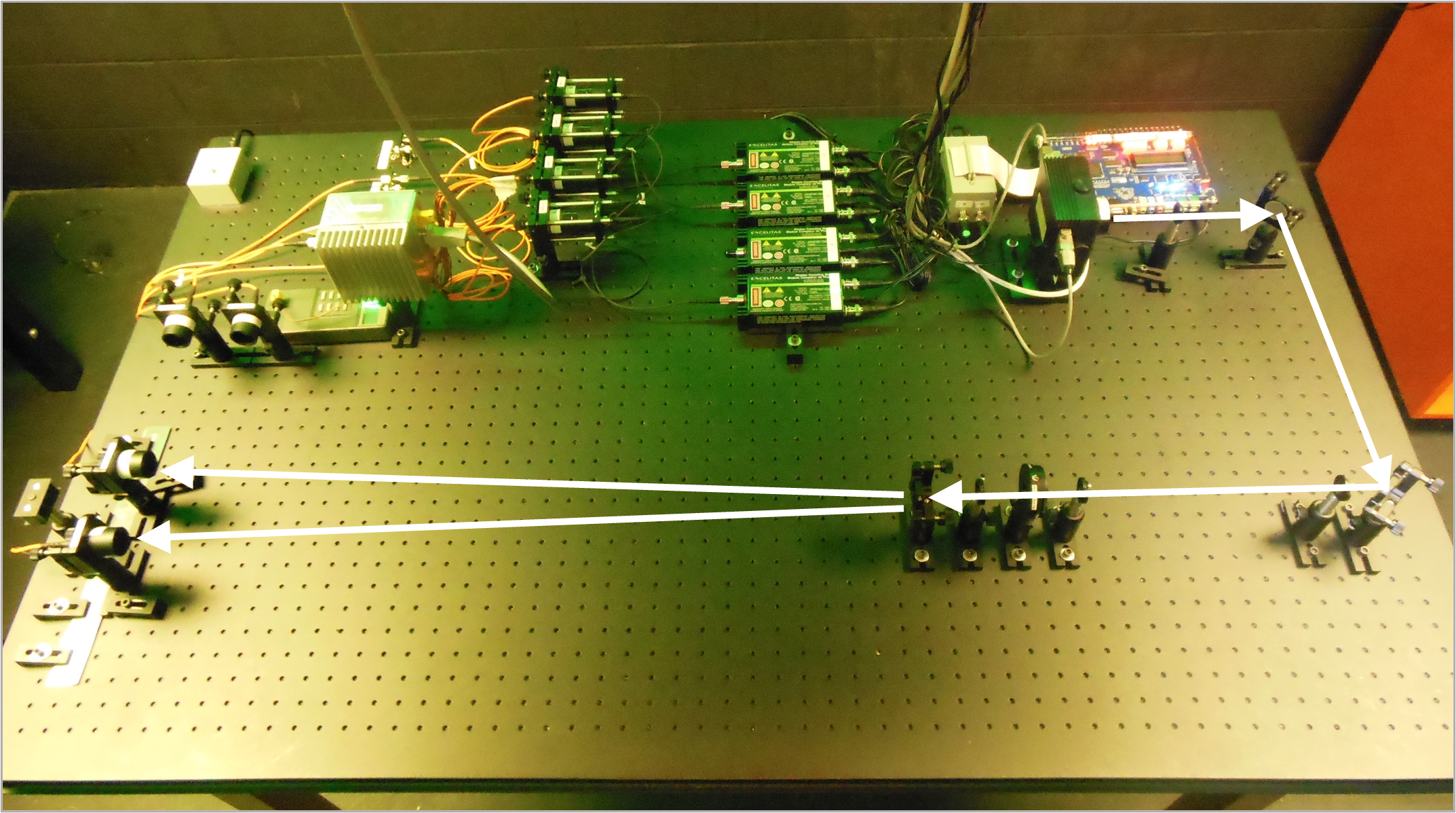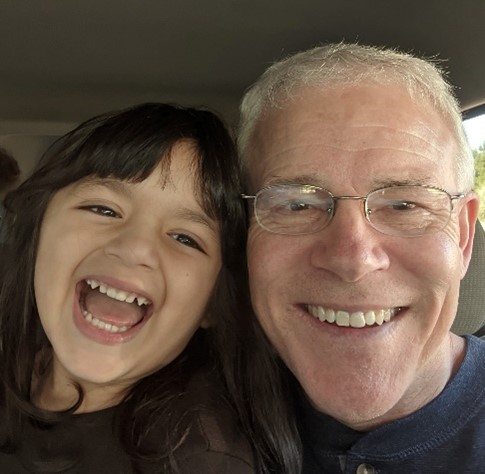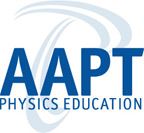- Home
- What We Do
- Laboratory Immersions
- Immersions 2023
- Imm2023FMU_SinglePhotons
Francis Marion University, Florence, SC
Single Photon Experiments
Dates: May 29, 2023 to May 31, 2023
Number of setups available: 1
Maximum number of participants: 2
------------------------------------------------------------------------------------------------------------------------------------------
During this Immersion, participants will perform single photon tests of quantum mechanical predictions. These experiments will include characterization of a single photon source, “proof” of the existence of photons, measuring amplitudes and phase angles for quantum mechanical states, and single photon interference. Pairs of single photons will be produced by a nonlinear optical process known as Spontaneous Parametric Downconversion. A powerful laser beam, known as the Pump Beam, will strike a nonlinear crystal at a special angle. When this happens, one Pump Beam photon is converted into two photons, known as the Signal Beam photon and the Idler Beam photon. The frequencies of the Signal and Idler Beam photons are equal to one another and are half as large as the Pump beam photon. In addition, the polarizations of the Signal Beam photon and the Idler Beam photon are perpendicular to that of the Pump Beam photon.
Apparatus
The apparatus consists of a 90 mW diode laser that emits the Pump Beam at 405 nm. This passes through a nonlinear BBO crystal and produces two photons at 810 nm (the Signal and Idler Beam photons). Afterwards, various single photon tests of quantum mechanical predictions are performed, and the resulting single photons are collected by fiber optic Light Collection Units. These optical fibers are connected to a Switching Station; the collected photons are sent to Filtering Units; and the transmitted photons are detected by Single Photon Counting Modules. The Filtering Units protect the Single Photon Counting Modules from being overwhelmed by ambient room light. The output of the Single Photon Counting Modules is sent to a Coincidence Counting Circuit Board that can be set to detect coincident photon signals from various Light Collection Units. The output of the Coincidence Counting Circuit Board is sent to a computer that runs LabView software for each quantum mechanics experiment. The attached photograph illustrates the setup for characterization of a single photon source. For the other experiments, additional optical components are placed between the nonlinear BBO crystal and the Light Detection Units.

Dr. Mark Beck at Reed College developed the excellent single photon experiments for this Immersion. For more information on these experiments, including a recent parts list, please visit http://www.reed.edu/~beckm/QM/ . The total cost for this apparatus depends on several factors, including the optical components that a participant’s university already owns, the type/cost of the particular optical components that a participant chooses to purchase, and the experiments that a participant wishes to perform. According to Dr. Beck, the approximate cost for implementing the experiments is currently $20,000.
Tentative Schedule
Day 1
Introductions
Overview of Immersion
Day 1 Prelab
Characterization of a Single Photon Source
Day 2
Day 2 Prelab
Proving the Existence of Photons
Quantum State MeasurementsDay 3
Day 3 Prelab
Single Photon Interference
Quantum Eraser
Skills, Safety, and Things to Bring
Participants will learn how to setup and operate all parts of the apparatus, will become proficient at aligning the optical equipment for each experiment, and will learn about the underlying physics principles for each experiment. All of the equipment that is necessary to perform these experiments will be provided. Appropriate laser safety equipment will also be provided. Dr. Mark Beck wrote an excellent text, entitled Quantum Mechanics: Theory and Experiment (Oxford Univ. Press, 2012, ISBN 978-0-19-979812-4). All of the experiments in this immersion are included at the end of the book. Interested participants will find the book very useful. A copy will be available for use at the immersion. Participants should bring a notebook and calculator to the immersion.
 Seth Smith earned his undergraduate degree from Francis Marion University and his Masters and PhD degrees in physics from Louisiana State University. His graduate training was in experimental laser physics, involving dye laser development and supersonic free jet expansions of free radicals. He has been a physics professor at Francis Marion University since 1989. In recent years, his focus has been on learning advanced undergraduate physics experiments and incorporating these into the physics curriculum. He established the Advanced Laboratory in Physics at FMU and has incorporated numerous experiments into this lab, the Modern Physics Lab, and the Research in Physics course. He has benefited immensely from participation in 11 ALPHA Immersions and 3 Beyond the First Year of Physics Conferences, and these have been the single most valuable set of experiences in his career. He is a winner of the FMU Distinguished Professor Award and holds the Pee Dee Electric Cooperative Chair in Physics at FMU.
Seth Smith earned his undergraduate degree from Francis Marion University and his Masters and PhD degrees in physics from Louisiana State University. His graduate training was in experimental laser physics, involving dye laser development and supersonic free jet expansions of free radicals. He has been a physics professor at Francis Marion University since 1989. In recent years, his focus has been on learning advanced undergraduate physics experiments and incorporating these into the physics curriculum. He established the Advanced Laboratory in Physics at FMU and has incorporated numerous experiments into this lab, the Modern Physics Lab, and the Research in Physics course. He has benefited immensely from participation in 11 ALPHA Immersions and 3 Beyond the First Year of Physics Conferences, and these have been the single most valuable set of experiences in his career. He is a winner of the FMU Distinguished Professor Award and holds the Pee Dee Electric Cooperative Chair in Physics at FMU.
Dr. Seth Smith. Email: rsmith@fmarion.edu .





